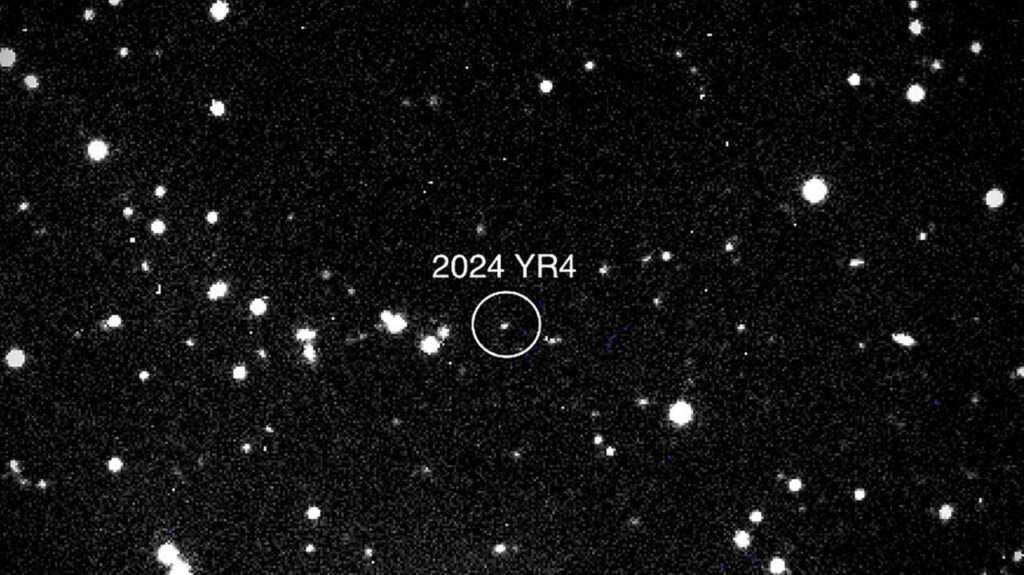WASHINGTON, D.C. — A newly detected asteroid with the potential to destroy a city now has a 3.1% chance of colliding with Earth in 2032, according to data released by NASA on Tuesday.
This makes it the most significant space rock threat ever recorded using modern forecasting techniques.
Despite the increasing probability, experts urge calm, emphasizing that global astronomers are closely tracking the asteroid, designated as 2024 YR4.
The James Webb Space Telescope is scheduled to observe the object next month to refine predictions about its trajectory.
“I’m not panicking,” said Bruce Betts, chief scientist at the nonprofit Planetary Society. “When probabilities rise, it’s concerning, but as we gather more data, we expect the risk to drop significantly.”

HISTORIC RISK LEVEL SURPASSES APOPHIS
First detected on December 27, 2024, by the El Sauce Observatory in Chile, 2024 YR4 is estimated to be 130 to 300 feet (40–90 meters) wide, based on its brightness.
Scientists believe its composition is fairly typical for an asteroid, without rare metal elements.
The International Asteroid Warning Network (IAWN) raised an alert on January 29 after the impact probability surpassed 1%. Since then, estimates have fluctuated but have continued trending upward.
NASA’s latest calculations project a potential impact on December 22, 2032, with the odds currently standing at 1 in 32—comparable to correctly predicting the outcome of five consecutive coin flips.
The last time an asteroid of this size posed a significant risk was Apophis in 2004, which briefly had a 2.7% chance of hitting Earth in 2029 before further observations ruled out a collision.
Surpassing that threshold marks a “historic” moment, according to Richard Moissl, head of the European Space Agency’s planetary defense office, though ESA’s estimates place the risk slightly lower at 2.8%.
POTENTIAL IMPACT AND RESPONSE PLANS
While the asteroid does not pose a global threat, it could cause widespread destruction if it strikes a populated area.
Traveling at nearly 40,000 miles per hour, an impact could result in an airburst explosion equivalent to 8 megatons of TNT—more than 500 times the power of the Hiroshima bomb.
If the asteroid is on the larger end of size estimates, it could even create an impact crater.
The projected impact zone includes the eastern Pacific, northern South America, the Atlantic Ocean, Africa, the Arabian Peninsula, and South Asia, though scientists caution that it is too early to predict an exact location.
If the risk surpasses 10%, the IAWN would issue a formal warning, prompting United Nations member states to initiate emergency preparedness measures in potentially affected areas.
On the positive side, there is still time for intervention. NASA’s DART mission in 2022 successfully demonstrated that spacecraft can alter an asteroid’s trajectory.
Other proposed deflection strategies include laser ablation, gravitational towing, and nuclear explosions as a last resort.
Scientists expect further observations, particularly with the James Webb Space Telescope in March, to provide greater clarity on whether 2024 YR4 remains a genuine threat—or if, like Apophis, its danger will eventually be ruled out.
